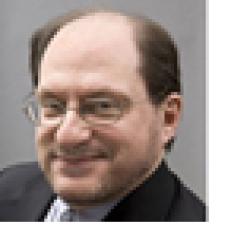Along with NYSE Euronext’s report Tuesday of a 7 percent rise in first-quarter net income — and overshadowed by it — was the exchange operator’s announcement of a further retreat from its self-regulation business. Before the end of June, NYSE expects to transfer its market surveillance and enforcement functions to the Washington, D.C.-based Financial Industry Regulatory Authority (FINRA).
The move is in line with post-crisis calls for fewer regulators and greater coordination among them, but it’s debatable how great a stride it is. At a time when financial regulation as a whole is being scrutinized for its failures in anticipating and reacting to the crash of 2007-’08, questions persist about the role and effectiveness of self-regulation. As it is, and as Congress continues to wrestle with reform proposals, U.S. financial oversight still falls far short of the streamlined framework that the Committee on Capital Markets Regulation recommended a year ago: “a new consolidated structure comprising the Fed, a newly created U.S. Financial Services Authority, the Treasury Department and possibly a consumer and investor protection agency.”
Three years ago, NYSE consolidated its member-firm supervision with that of the National Association of Securities Dealers, the Nasdaq market’s long-time self-regulator, in FINRA. Its first chief executive officer was the NASD’s Mary Schapiro, now chair of the Securities and Exchange Commission. At the time, NYSE retained market oversight functions in its NYSE Regulation unit headed by Richard Ketchum, who became chairman and CEO of FINRA when Schapiro went to the SEC last year.
“NYSE Regulation will remain ultimately responsible for overseeing FINRA’s performance of regulatory services for the NYSE markets,” according to Tuesday’s announcement. While some 225 NYSE Regulation staff will be transferred to FINRA, which has 2,800 employees, the NYSE regulatory arm will continue to be involved in “rule interpretations and oversight of listed issuers’ compliance with the NYSE markets’ financial and corporate governance standards.”
James Duffy, interim CEO of NYSE Regulation, described the move as advancing the consolidation that began with the member-firm oversight merger in July 2007. Ketchum underscored the investor protection benefits of a “unified approach to market oversight,” as FINRA will “have a more holistic, cross-market approach to regulation that addresses the realities of today’s trading environment, which is characterized by fragmented markets, aggressive competition and complex trading strategies.”
NYSE’s U.S. equities and options markets will join a mix of asset classes and trading platforms already under the FINRA umbrella: Nasdaq Stock Market, Nasdaq Options Market, Nasdaq OMX Philadelphia, Nasdaq OMX Boston, BATS Exchange and International Securities Exchange.
FINRA and NYSE Regulation maintain a steady drumbeat of enforcement actions, mostly small-bore compared with high-profile SEC actions like the recently filed civil suit against Goldman, Sachs & Co. over collateralized debt obligations. There have been a number of six-figure and higher cases in recent days: a $450,000 penalty and censure by NYSE on Goldman Sachs Execution and Trading for violations of SEC short-selling rules in 2008 and 2009; a total of $385,000 in FINRA fines of five broker-dealers for illegal penny stock sales; and FINRA settlements of auction-rate securities violations that resulted in a $1.5 million fine of HSBC Securities (USA) and a $275,000 fine of US Bancorp Investments.
In aggregate, according to statistics on FINRA’s Web site, there has not been much change in its number of disciplinary actions filed in the last three years: 1,177 in 2007, 1,073 in 2008 and 1,158 in 2009. The number of formal actions resolved in those years: 1,107, 1,007, 1,090. The total of individuals barred and suspended rose from 626 in 2007 to 684 in 2008 and 746 in 2009.
Eliot Spitzer, the former “sheriff of Wall Street” and deposed New York governor, now an outspoken critic of financial regulators, says, “Self-regulation has never worked.” Speaking last month at an economics conference sponsored by the Levy Economics Institute of Bard College, he accused these agencies of never having brought “a major case.” He said, “Robust regulation will work, and it has to replace the self-regulation canard.” As part of his general regulatory critique, he added, “It’s an issue of lack of will, not lack of power.”
Under Ketchum, FINRA’s senior staff includes Thomas Selman, a NASD veteran who is executive vice president of regulatory policy; and two EVPs of member regulation who came from NASD and NYSE, respectively: Robert Errico and Grace Vogel. Gone from the team as of March is head of enforcement Susan Merrill, who came in on the NYSE side in 2004 and is now leading the securities enforcement practice of the Bingham McCutchen law firm.







